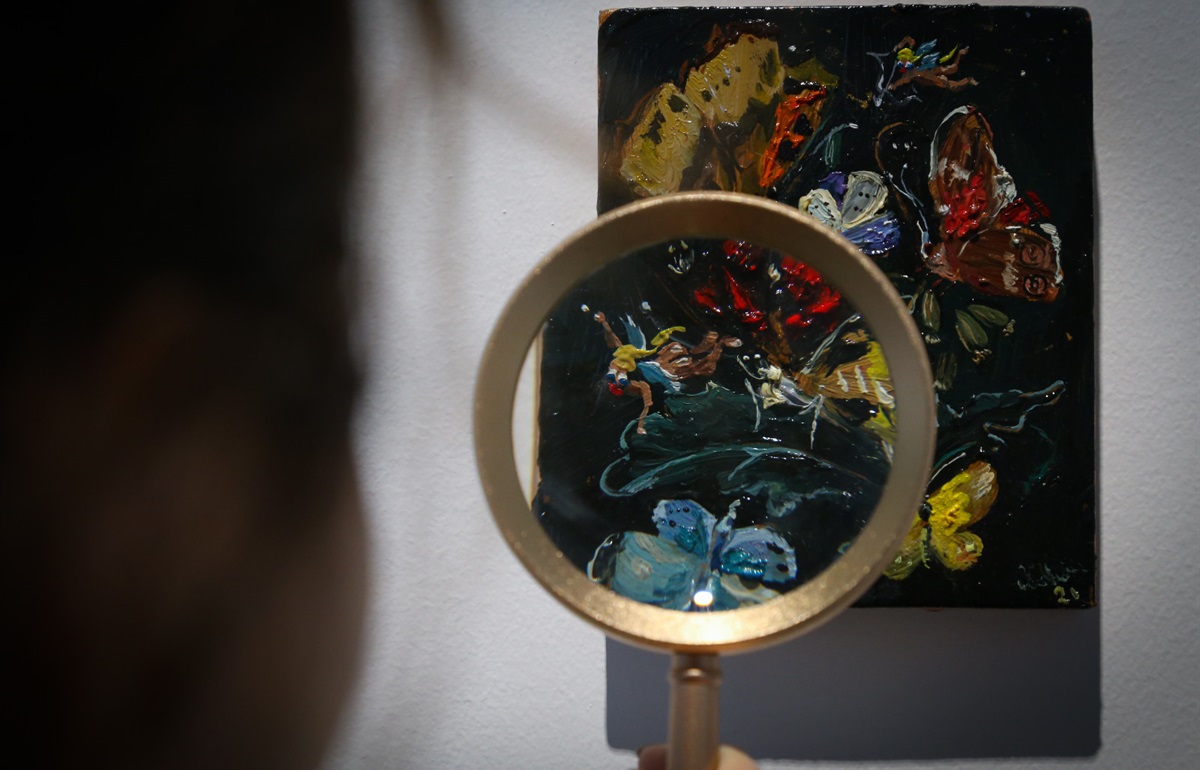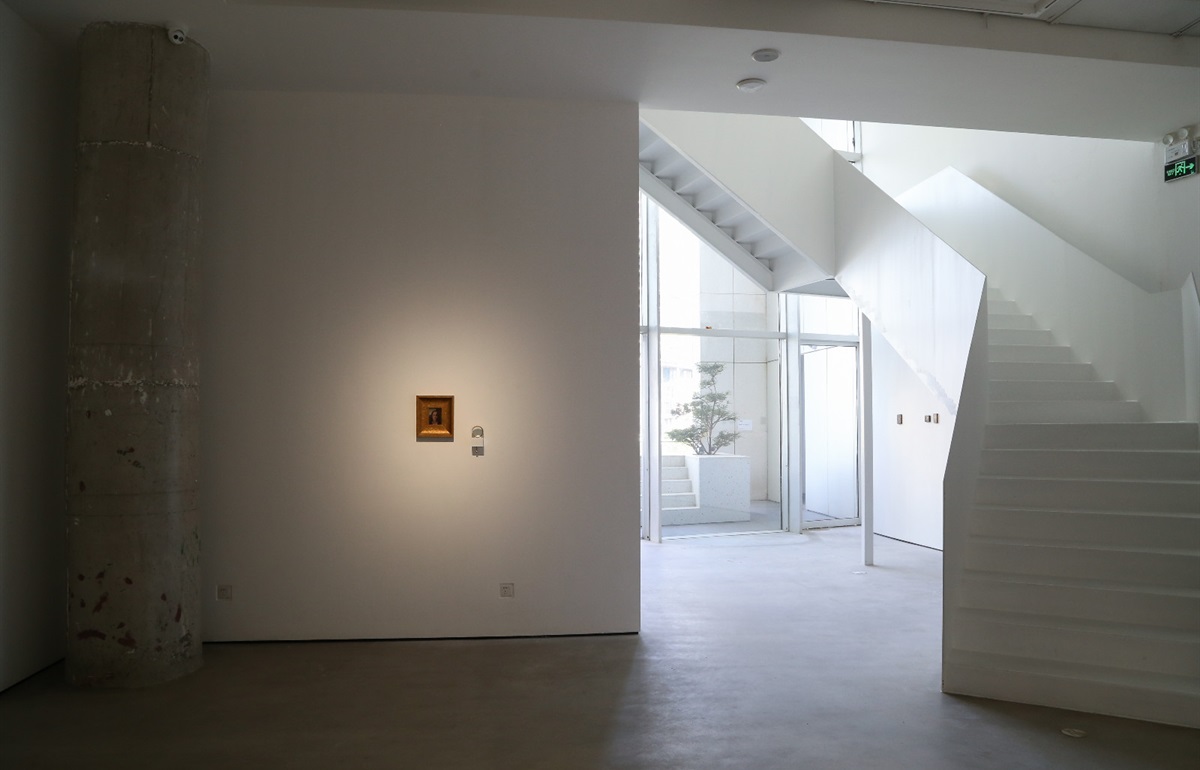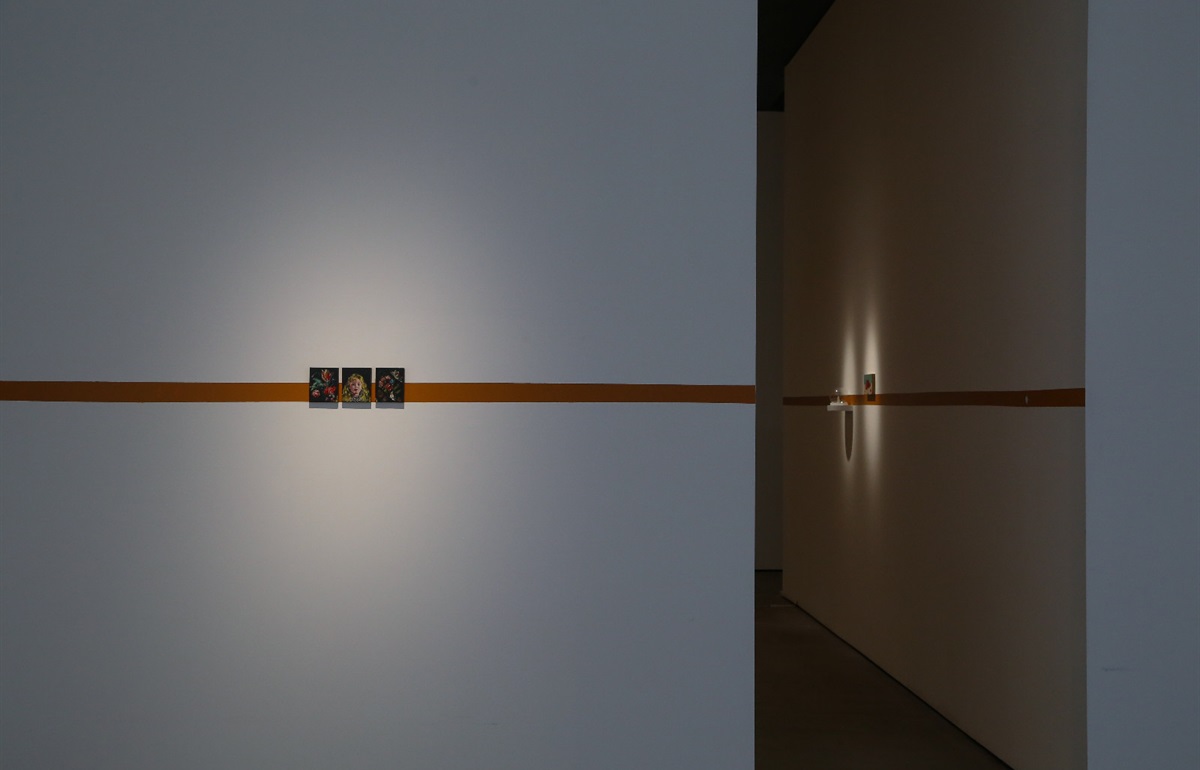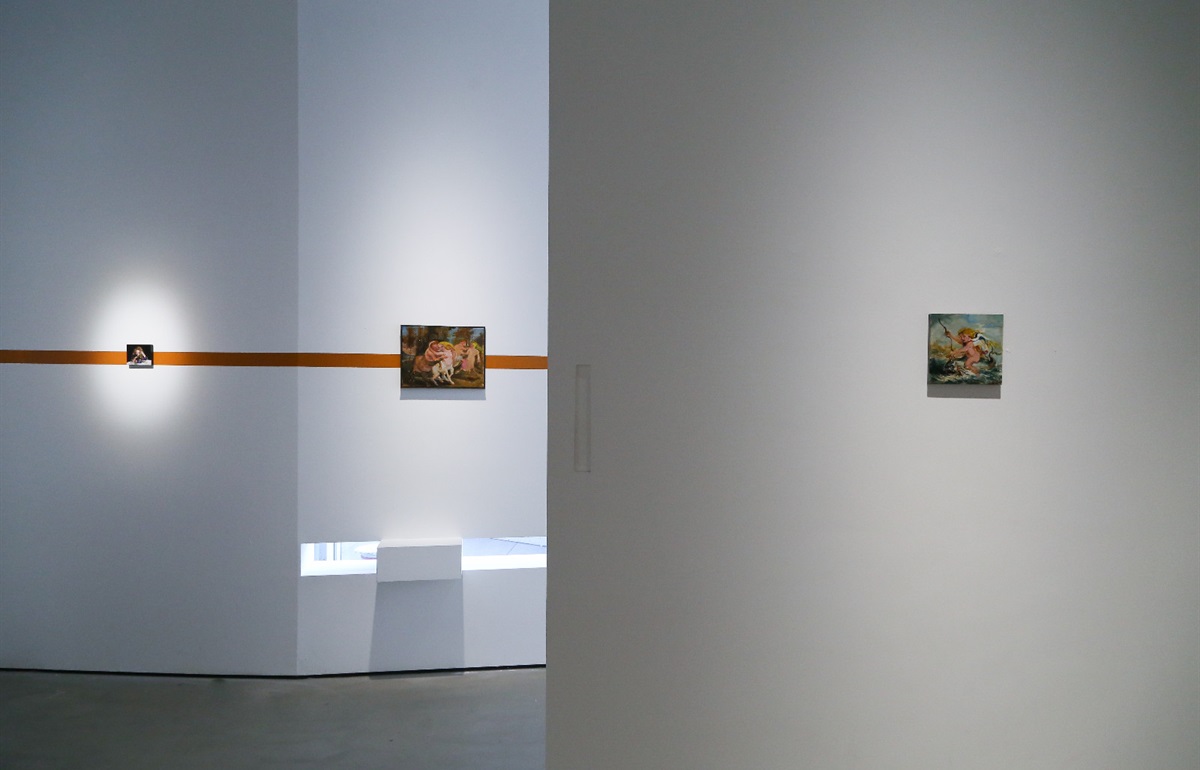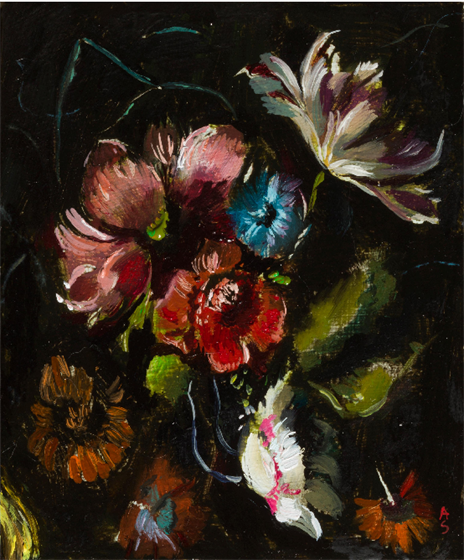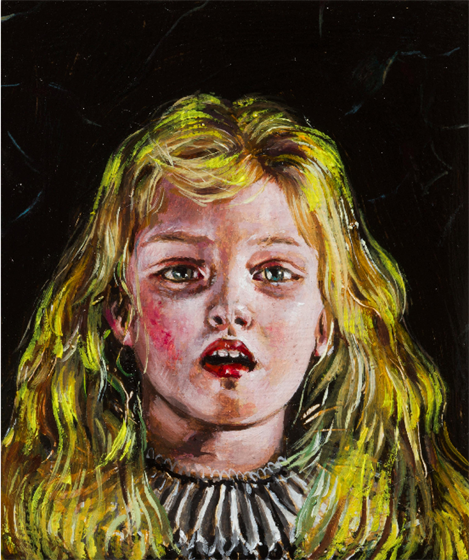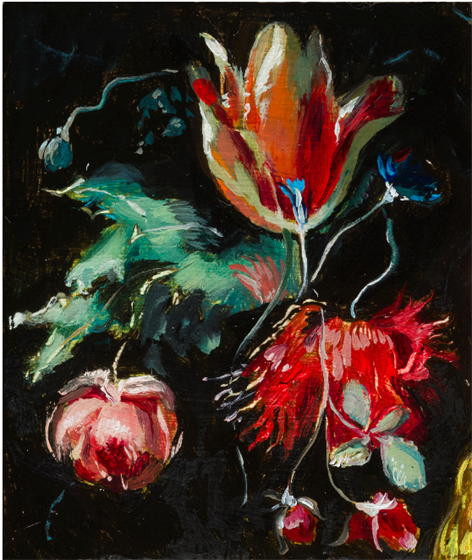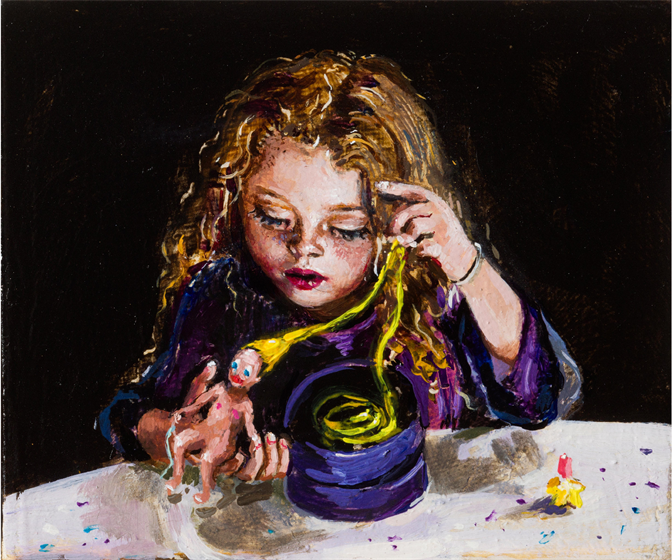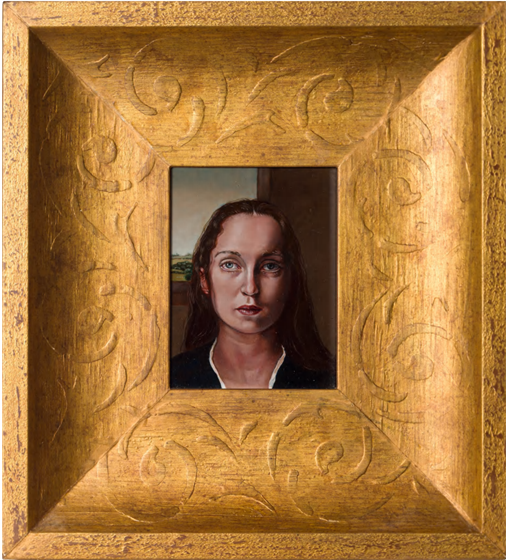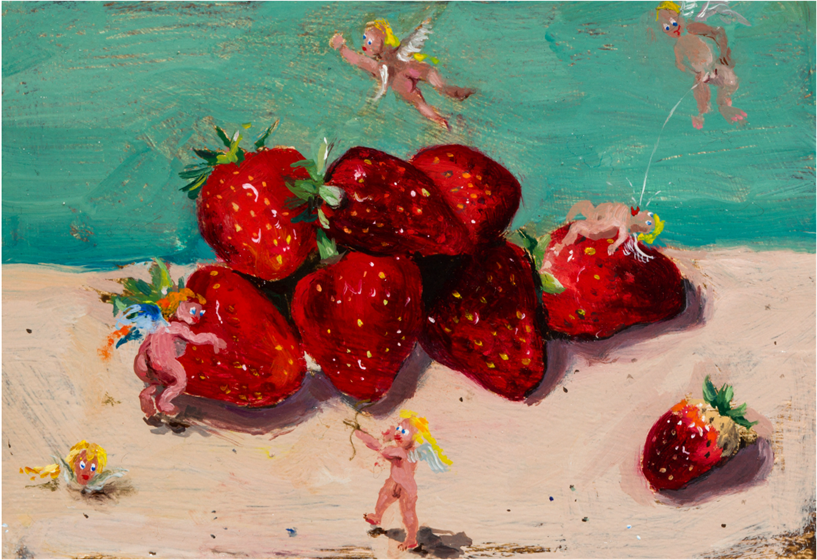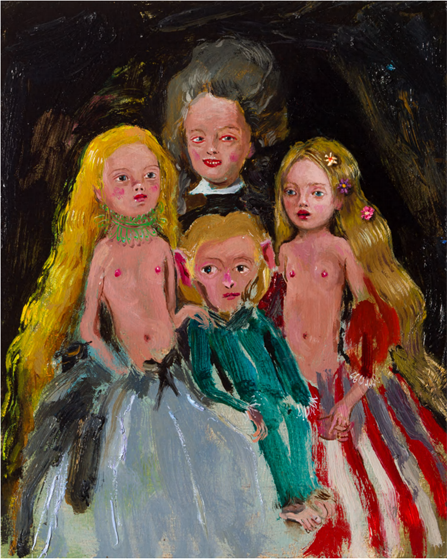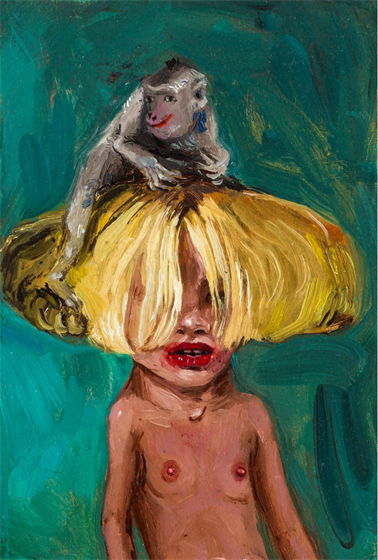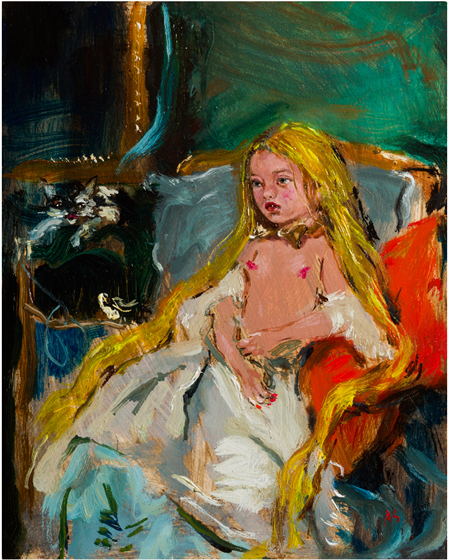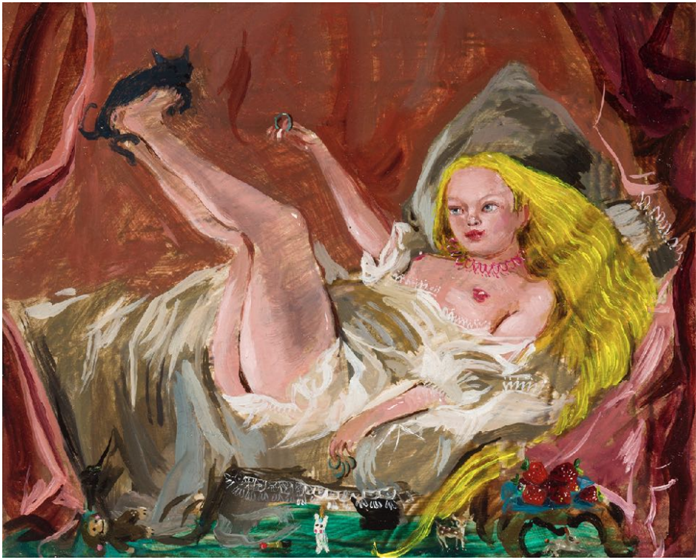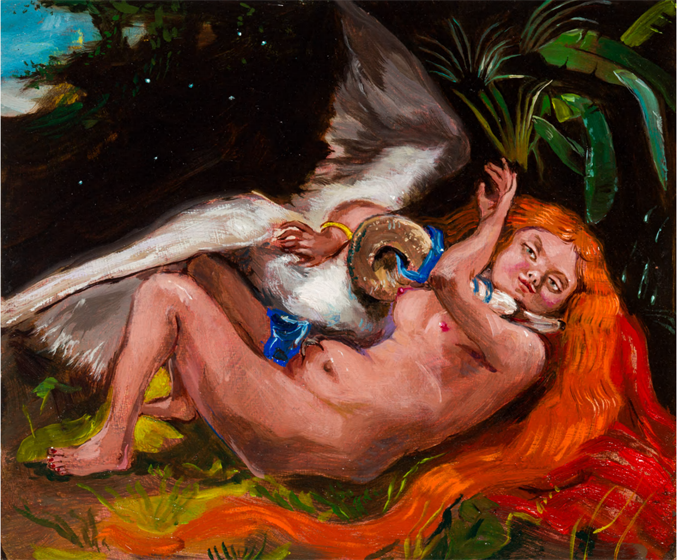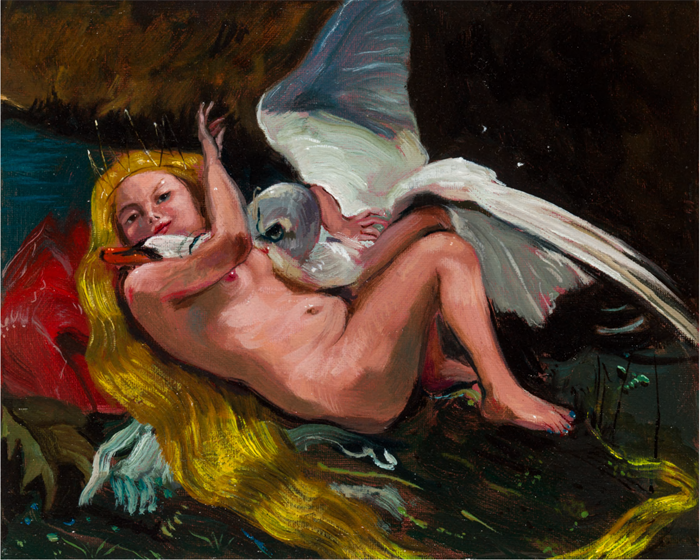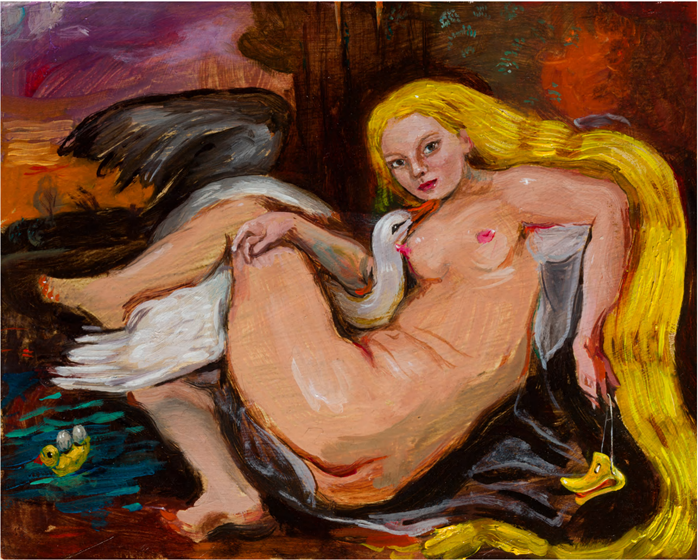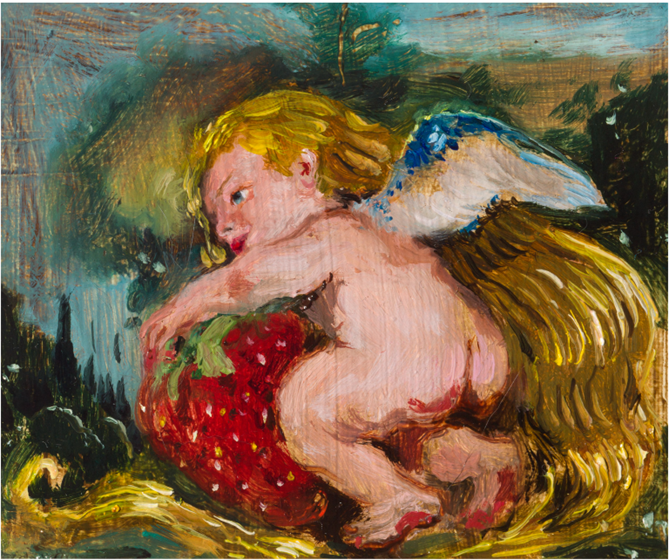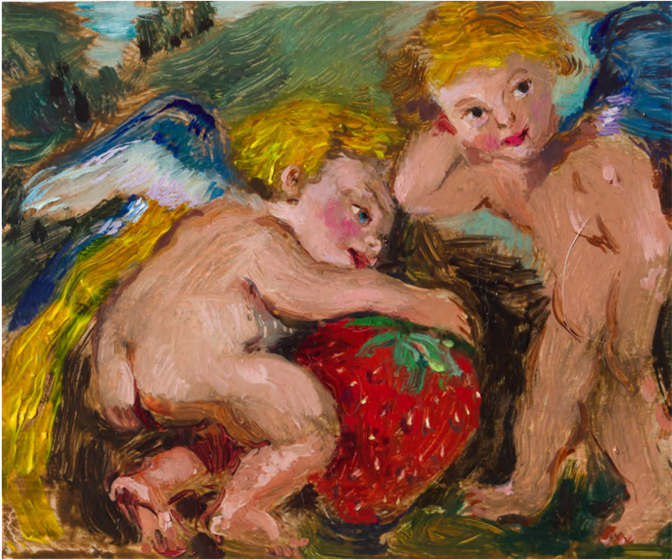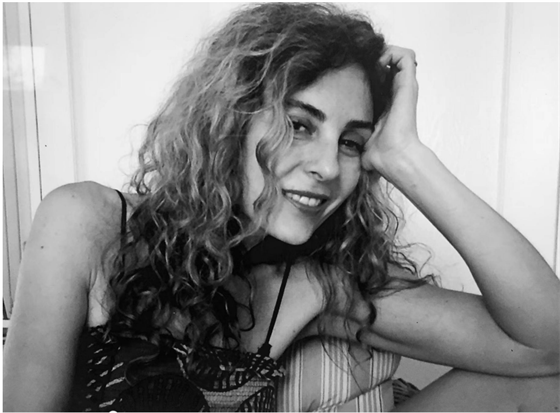Video Link: In the Gallery: Her Paintings and Antiquities Held in Your Hand | W.ONESPACE
W.ONE SPACE is pleased to present the exhibition "Hold Infinity in the Palm of Your Hand", this exhibition will introduce the miniature oil paintings created by Italian artist Adria Sartore in recent years and a group of antiquities on the scale of a hand. All kinds of hand-held utensils and paintings together generate spiritual agitation despite their compact sizes.
"Hold Infinity in the Palm of Your Hand" is taken from the poet William Blake (1757-1827) in his poem "Auguries of Innocence", which describes the smallness and the grandeur, the microscopic world and the macroscopic world, which are similar to the discussion in the Eastern saying “To see a world in a grain of sand”. In myths and stories around the world, there are sayings that human beings were born under the "hand of the Creator". In the long historical context, the petroglyphs in cave paintings have been found in many prehistoric archaeological processes. These patterns are metaphors with profound connotations, and conjectured to have various mysterious functions such as original memoirs, sacred figures, metaphorical concepts, totem worship and so on. From these handprints, we can already see that human beings at that time had primitive impulses for expression. These handprints also recorded the prototype of the origin of human art. In ancient times, people carefully pressed their hands on the walls and covered them with primitive pigments, leaving the imprint of "I", that is, the evidence of the existence of human beings. As civilization gradually develops, people's need for cognition of objects becomes more and more profound, so the "hand" that everyone has become the original tool to measure, from the Egyptian sculptor to the ancient Chinese all use hands as the measure tool. In the beginning, people used their own physical parts to judge the number and quantity, length and shortness and the scale of things, even the outside world. In the past and present, the hands are used as labor and tactile organs. While helping human beings to create and measure the world, they continue to convey human emotions.
Artist Adria Sartore was born in Genova, Italy in 1969. Sartore owns an aesthetics degree in philosophical art. During her college time, she became interested in the history of Theatre of Ancient Greece, as well as Greek Mythology. She was drawn into the myths, which are stories about people, gods, and demigods. Most of those stories are written from an anthropological perspective, which focus on searching inward our fundamental human nature. Stories that seem to be absurd today containing moral teachings, exploration of desires, love and war, conflict and disaster. However, those stories are also telling the diversity of beauty. It could be vital, incredible, mysterious and legendary. These images have provided countless inspirations for artists, and they are still constantly explored and interpreted till today. Italian traditional cultural heritages, myths and classical art have been written into Sartore’s genes. She is particularly fond of presenting emotions from her own life and visual memory on her palm-sized paintings. By using the medium of traditional oil painting on wood, Sartore constructs a new "mythical" scene from her own perspective. This is a combination of graphic explorations and symbolic concepts. The artist also gets inspirations from masters, such as Rubens, Hieronymus Bosch, Orazio Borgianni, François Boucher, Pontormo, Jacopo da, D.Veneziano and so forth. She is good at extracting characters and symbols, deconstructing and re-compositing so that she is able to change the relationship between people and things from the original myths. This re-creation enables the artist and the audiences break into an overly sanctified story, to fully experience a playful and humorous emotion. Beauty and the grotesque, praise and disgust, these contradictory emotions run across her works and bring a strong tension to the audiences. This unseen stress is the key that encourages Sartore keep going down for her artistic exploration.
Sartore’s father, who had been in the antiques business for many years, took her for many long and mysterious walks when she was a child. Her dad guided her to discover the mystery of the old city, Sartore says, they walked to the hidden sides of the churches and eye-touched every inch of the museum asides. Savoring the past, the beauty, the splendor of art, and the beauty of the dark, Sartore’s father taught her to find a spiritual connection to those things. Therefore, in addition to the familiar classical and figurative themes, this exhibition also presents her memories from the childhood, including images of flowers, birds, fishes and insects.
Surprisingly, Sartore has engaged some elements from Chinese antiques in her recent works. This time, the baby figures are living in their own universe, traveling through the antiques, swimming among the flowers and the seabed. They all explore like children, marking the artist's connection with the world. Sartore has always regarded painting as a journey to seek inward and a process of self-healing. To her, painting recreates those disturbing feelings from her childhood experiences. She regards the theme as a magician while she working. By doing so, she is able to transform the feeling of the unknown, just like the reflection from the glass or mirrors, so that the audience can enter the deep down hidden space in her heart created by herself.
With the oriental elements in Sartore’s paintings, we will reveal another "small" world in the East. In the past, the ancients used the palm of their hands as a measurement. "Pearl in the Palm" is an old Chinese sayingshowing something is cherishing, and it also has a special feminist color. "Palm play" is a small piece of utensil that people from the royal family to the scholar love to play with, such as Mi Fu's "sleeve stone" in the Song Dynasty, small carved sculptures recorded in "Hezhou Ji" in the Ming Dynasty, and the special term "Hundreds of Pieces" circulated in the royal archives of the Qing’s court. "Hundreds of Pieces", also known as "Jiqiongzao", "Jinyu Box", indicate the emperor's toy boxes. There were many treasures stored in a small square box. Even when the emperor travelled, he insisted to carry it, therefore it had become a way of life that someone would play and enjoy in the spare time. The "gadgets" in this exhibition are all in the size that anyone can easily grasp, with various types and materials. Ancient utensils spanning the jade wares, Roman bronzes, gilt statues, porcelains, literati’s objects, etc. Flowers, birds and animals convey their content to aspirations; the objects show the elegance and life of the literati; the religious objects and statues are meticulously depicted, and they are also sumptuous, representing strong power of faith. Those objects jointly construct the universe in the palm of one’s hand, and empower us to see the world from a square inch and gain the imagination of the Dojo of the snail shell.
To see a World in a Grain of Sand
And a Heaven in a Wild Flower
Hold Infinity in the Palm of Your Hand
And Eternity in an hour
—— William Blake, Auguries of Innocence
When we were young, we were full of longing for the world. Although we had not yet acquired language at that time, our curiosity about objects could only be expressed through actions: touching, grasping, putting down, and collecting. Whether a thing is harmful or not, the first level of cognition is always l generated through touching. Once we confirm that the thing is harmless, we will pick up and play with them. Through understanding, discovering, solving puzzles, and finally owning the tiny things in our hands, we gradually build up our understanding of the whole world. For example, we are more likely to possess flowers and pebbles, but unlikely a big tree or a mountain. However, grand concepts do not always require grand narratives. If we open the door of perception, everything will appear in front of us in infinite original form.
The artist Andre Derain (1880-1954) once said meaningfully, "There is a secret passage from the object to the painting, and we are the seekers of the lost secret." When we focus on Sartore’s miniature oil paintings, or the antiques in the palm of our hands, we can see colors, wonderful stories, exquisite depictions and an infinite world from the small things. The artist endows the characters in the images with strong sensual colors of memory, emotion and the magical unknown, making us return to the state of childhood, and once again have various emotions of curiosity, exploration, gain or loss and anxiety about the world. In the same way, the microscopic world of antiquities will not only tell you the vicissitudes of the past years, but also show you a huge world and nostalgic stories. The intertextuality between the two, the images interpreted differently from the perspectives of the East and the West, and the floating infinite thoughts, are all held in the palm of our hands.
W.ONE SPACE is pleased to present the exhibition "Hold Infinity in the Palm of Your Hand", this exhibition will introduce the miniature oil paintings created by Italian artist Adria Sartore in recent years and a group of antiquities on the scale of a hand. All kinds of hand-held utensils and paintings together generate spiritual agitation despite their compact sizes.
"Hold Infinity in the Palm of Your Hand" is taken from the poet William Blake (1757-1827) in his poem "Auguries of Innocence", which describes the smallness and the grandeur, the microscopic world and the macroscopic world, which are similar to the discussion in the Eastern saying “To see a world in a grain of sand”. In myths and stories around the world, there are sayings that human beings were born under the "hand of the Creator". In the long historical context, the petroglyphs in cave paintings have been found in many prehistoric archaeological processes. These patterns are metaphors with profound connotations, and conjectured to have various mysterious functions such as original memoirs, sacred figures, metaphorical concepts, totem worship and so on. From these handprints, we can already see that human beings at that time had primitive impulses for expression. These handprints also recorded the prototype of the origin of human art. In ancient times, people carefully pressed their hands on the walls and covered them with primitive pigments, leaving the imprint of "I", that is, the evidence of the existence of human beings. As civilization gradually develops, people's need for cognition of objects becomes more and more profound, so the "hand" that everyone has become the original tool to measure, from the Egyptian sculptor to the ancient Chinese all use hands as the measure tool. In the beginning, people used their own physical parts to judge the number and quantity, length and shortness and the scale of things, even the outside world. In the past and present, the hands are used as labor and tactile organs. While helping human beings to create and measure the world, they continue to convey human emotions.
Artist Adria Sartore was born in Genova, Italy in 1969. Sartore owns an aesthetics degree in philosophical art. During her college time, she became interested in the history of Theatre of Ancient Greece, as well as Greek Mythology. She was drawn into the myths, which are stories about people, gods, and demigods. Most of those stories are written from an anthropological perspective, which focus on searching inward our fundamental human nature. Stories that seem to be absurd today containing moral teachings, exploration of desires, love and war, conflict and disaster. However, those stories are also telling the diversity of beauty. It could be vital, incredible, mysterious and legendary. These images have provided countless inspirations for artists, and they are still constantly explored and interpreted till today. Italian traditional cultural heritages, myths and classical art have been written into Sartore’s genes. She is particularly fond of presenting emotions from her own life and visual memory on her palm-sized paintings. By using the medium of traditional oil painting on wood, Sartore constructs a new "mythical" scene from her own perspective. This is a combination of graphic explorations and symbolic concepts. The artist also gets inspirations from masters, such as Rubens, Hieronymus Bosch, Orazio Borgianni, François Boucher, Pontormo, Jacopo da, D.Veneziano and so forth. She is good at extracting characters and symbols, deconstructing and re-compositing so that she is able to change the relationship between people and things from the original myths. This re-creation enables the artist and the audiences break into an overly sanctified story, to fully experience a playful and humorous emotion. Beauty and the grotesque, praise and disgust, these contradictory emotions run across her works and bring a strong tension to the audiences. This unseen stress is the key that encourages Sartore keep going down for her artistic exploration.
Sartore’s father, who had been in the antiques business for many years, took her for many long and mysterious walks when she was a child. Her dad guided her to discover the mystery of the old city, Sartore says, they walked to the hidden sides of the churches and eye-touched every inch of the museum asides. Savoring the past, the beauty, the splendor of art, and the beauty of the dark, Sartore’s father taught her to find a spiritual connection to those things. Therefore, in addition to the familiar classical and figurative themes, this exhibition also presents her memories from the childhood, including images of flowers, birds, fishes and insects.
Surprisingly, Sartore has engaged some elements from Chinese antiques in her recent works. This time, the baby figures are living in their own universe, traveling through the antiques, swimming among the flowers and the seabed. They all explore like children, marking the artist's connection with the world. Sartore has always regarded painting as a journey to seek inward and a process of self-healing. To her, painting recreates those disturbing feelings from her childhood experiences. She regards the theme as a magician while she working. By doing so, she is able to transform the feeling of the unknown, just like the reflection from the glass or mirrors, so that the audience can enter the deep down hidden space in her heart created by herself.
With the oriental elements in Sartore’s paintings, we will reveal another "small" world in the East. In the past, the ancients used the palm of their hands as a measurement. "Pearl in the Palm" is an old Chinese sayingshowing something is cherishing, and it also has a special feminist color. "Palm play" is a small piece of utensil that people from the royal family to the scholar love to play with, such as Mi Fu's "sleeve stone" in the Song Dynasty, small carved sculptures recorded in "Hezhou Ji" in the Ming Dynasty, and the special term "Hundreds of Pieces" circulated in the royal archives of the Qing’s court. "Hundreds of Pieces", also known as "Jiqiongzao", "Jinyu Box", indicate the emperor's toy boxes. There were many treasures stored in a small square box. Even when the emperor travelled, he insisted to carry it, therefore it had become a way of life that someone would play and enjoy in the spare time. The "gadgets" in this exhibition are all in the size that anyone can easily grasp, with various types and materials. Ancient utensils spanning the jade wares, Roman bronzes, gilt statues, porcelains, literati’s objects, etc. Flowers, birds and animals convey their content to aspirations; the objects show the elegance and life of the literati; the religious objects and statues are meticulously depicted, and they are also sumptuous, representing strong power of faith. Those objects jointly construct the universe in the palm of one’s hand, and empower us to see the world from a square inch and gain the imagination of the Dojo of the snail shell.
To see a World in a Grain of Sand
And a Heaven in a Wild Flower
Hold Infinity in the Palm of Your Hand
And Eternity in an hour
—— William Blake, Auguries of Innocence
When we were young, we were full of longing for the world. Although we had not yet acquired language at that time, our curiosity about objects could only be expressed through actions: touching, grasping, putting down, and collecting. Whether a thing is harmful or not, the first level of cognition is always l generated through touching. Once we confirm that the thing is harmless, we will pick up and play with them. Through understanding, discovering, solving puzzles, and finally owning the tiny things in our hands, we gradually build up our understanding of the whole world. For example, we are more likely to possess flowers and pebbles, but unlikely a big tree or a mountain. However, grand concepts do not always require grand narratives. If we open the door of perception, everything will appear in front of us in infinite original form.
The artist Andre Derain (1880-1954) once said meaningfully, "There is a secret passage from the object to the painting, and we are the seekers of the lost secret." When we focus on Sartore’s miniature oil paintings, or the antiques in the palm of our hands, we can see colors, wonderful stories, exquisite depictions and an infinite world from the small things. The artist endows the characters in the images with strong sensual colors of memory, emotion and the magical unknown, making us return to the state of childhood, and once again have various emotions of curiosity, exploration, gain or loss and anxiety about the world. In the same way, the microscopic world of antiquities will not only tell you the vicissitudes of the past years, but also show you a huge world and nostalgic stories. The intertextuality between the two, the images interpreted differently from the perspectives of the East and the West, and the floating infinite thoughts, are all held in the palm of our hands.

